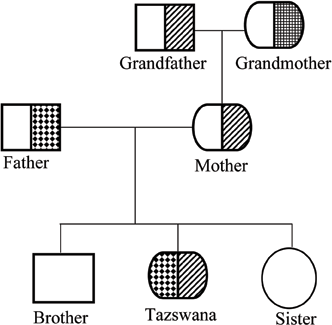Tazswana’s Story by S. Catherine Silver Key
Handout 2—β-Globin Inheritance Pattern
- The predominant inheritance pattern for β-thalassemia major and intermedia are inherited in an autosomal recessive pattern. List the individuals in Tazswana’s pedigree chart who are carriers for β-thalassemia. (Note: assume Tazswana is the only family member with symptoms.)
- List the individuals in the chart who are indicated as heterozygous for the β-globin gene. Explain your answers. (Note: heterozygous = more than one type of allele; “wild-type” is a normal allele; each type of mutation is an allele. Terms to learn: heterozygote, compound heterozygote (two mutant alleles).)
- Explain why only Tazswana has the disease.
- Speculate on why a mutation in the non-coding, intron region of the β-globin gene could produce a defective β-globin protein.
Copyright © 1999–2026 by the National Center for Case Study Teaching in Science. Please see our usage guidelines, which outline our policy concerning permissible reproduction of this work.

